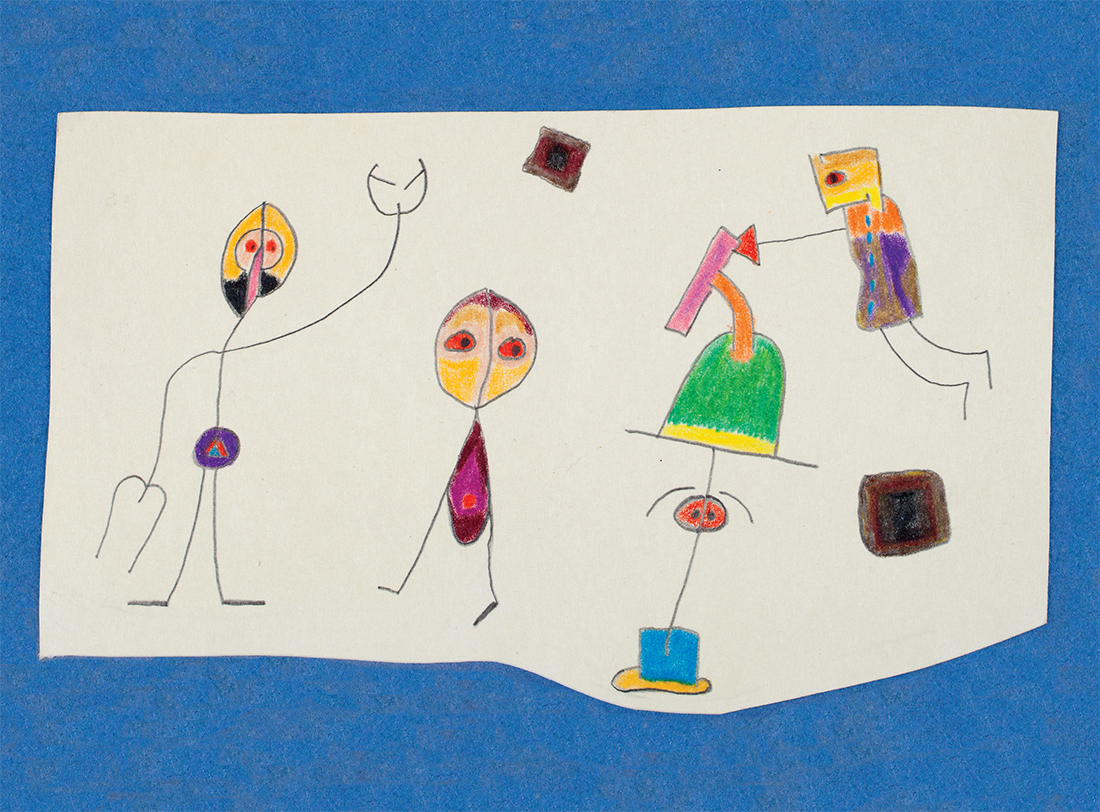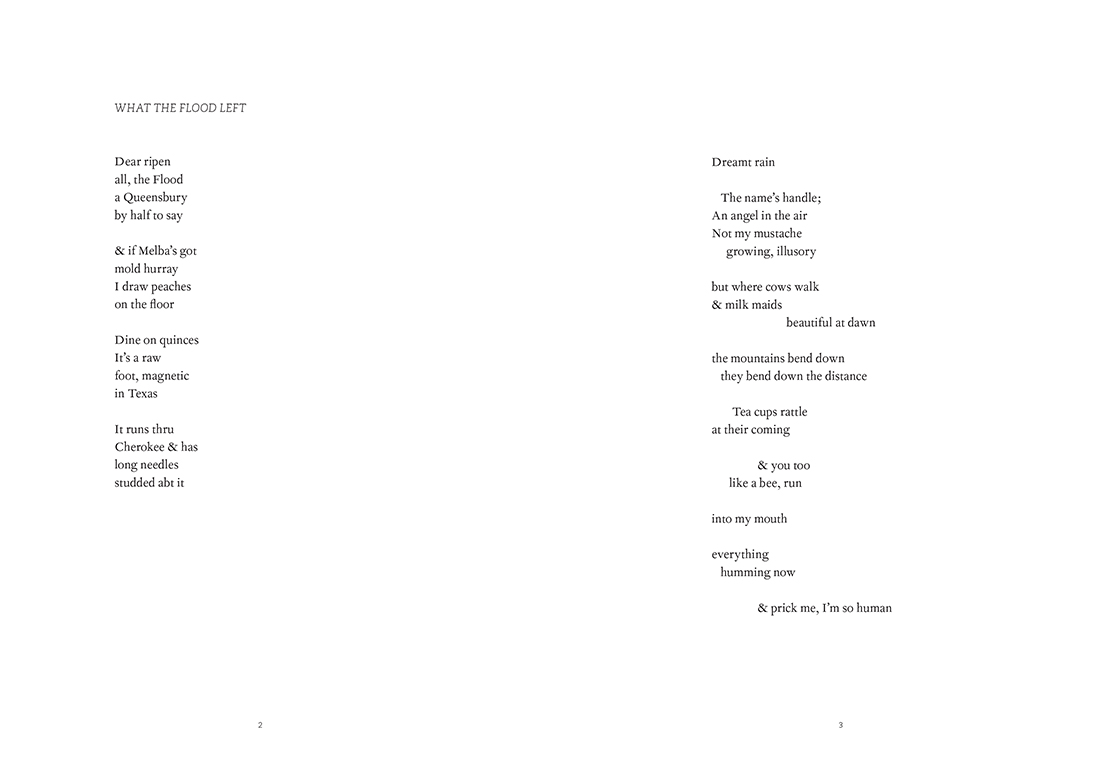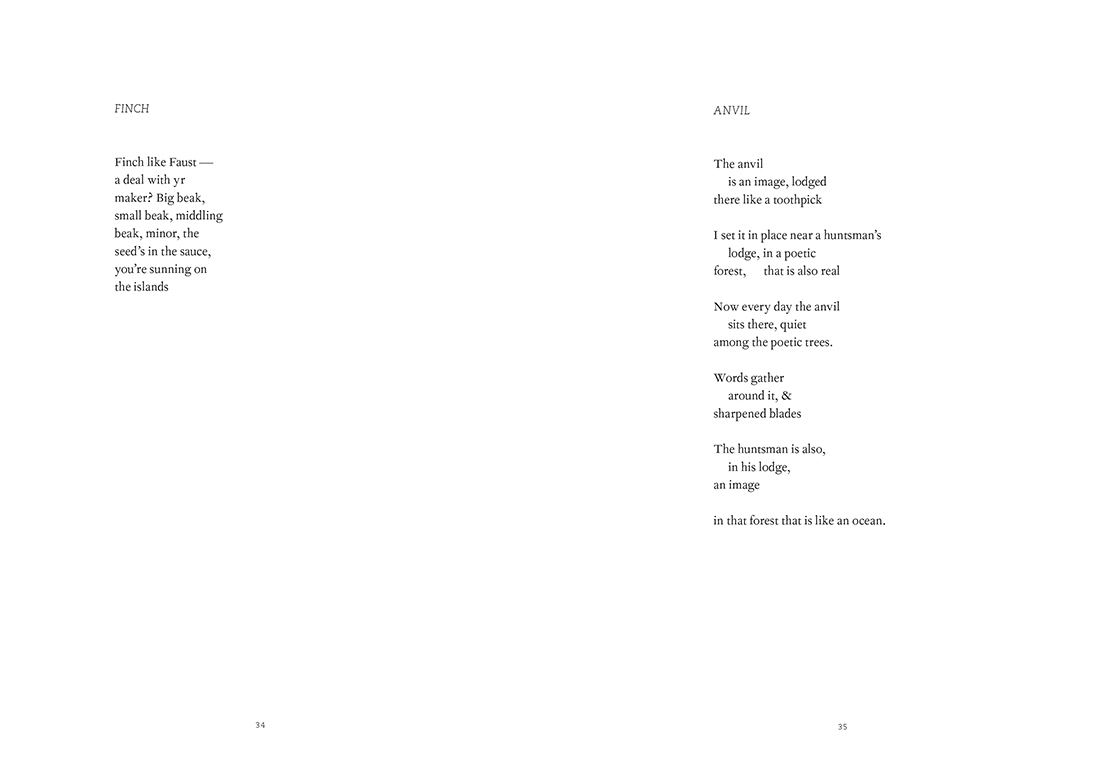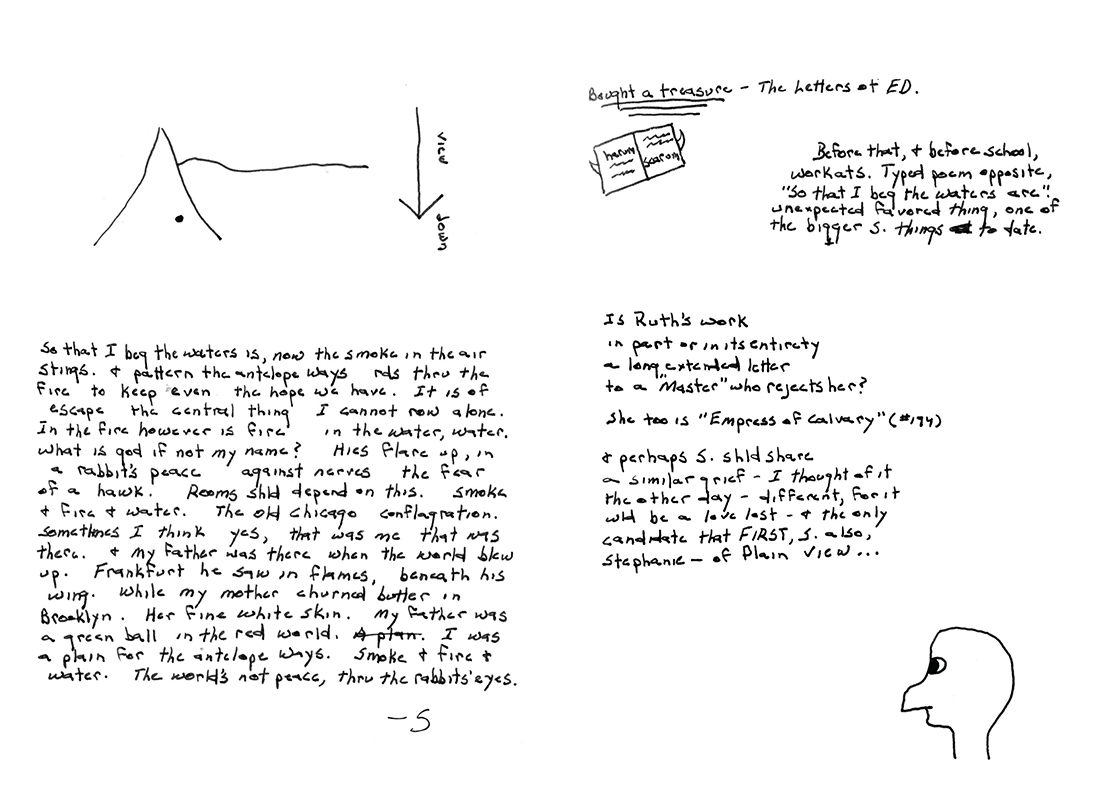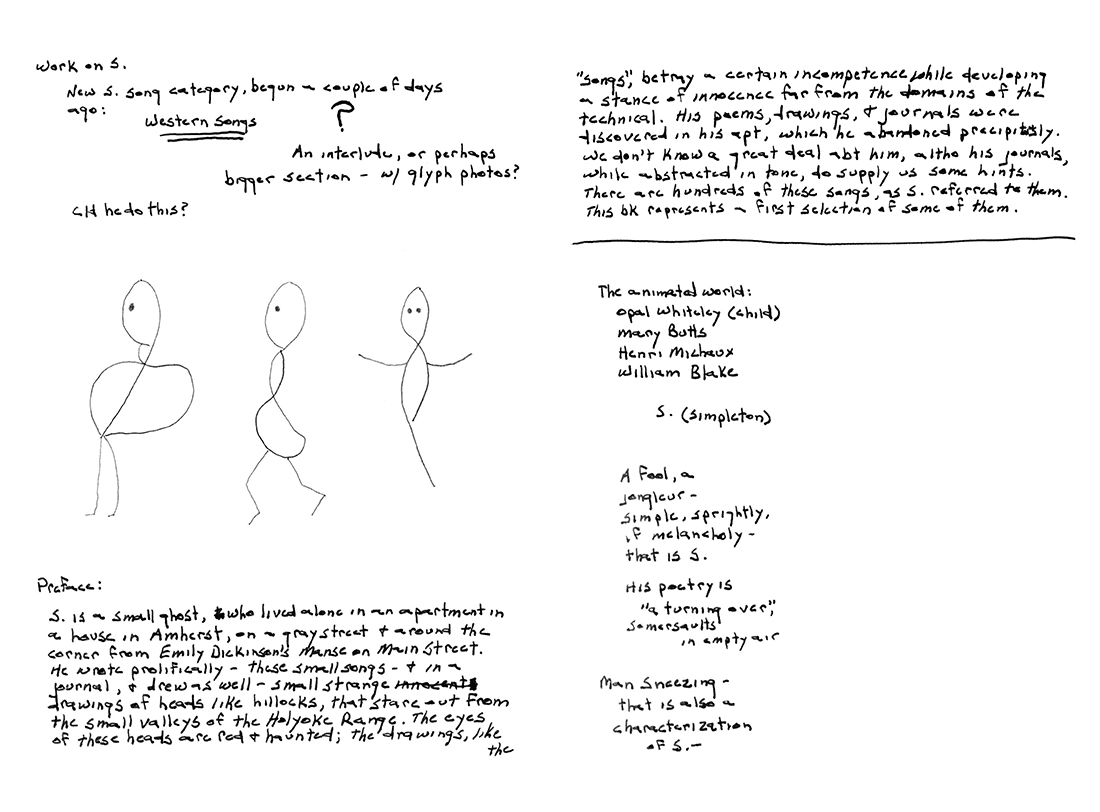REVIEW BY RYAN MIHALY
Odyssey Bookshop (South Hadley, MA)
S., locked in a room, is singing. He is surrounded by dust and books about the South Pole, animals, “Paleolithic Masters,” and poetry. He lives around the corner from Emily Dickinson, another shut-in, who visits S. “in form of a bee.” And he sings and sings; in fact, he writes, “songs / dominating / everything / now –,” ending the line with his famous neighbor’s signature dash.
This is S., the creature of Robert Seydel’s imagination, an elusive figure who draws, writes, and makes collages. Songs of S. collects S.’s poetry. The poems are joyfully naïve, rhyme when they want to, and delight in rhythm and sudden imagery. They seem infinitely rereadable, fleet as they are in their imaginative associations. “Matter / & natter / of tongue / Bent, ill / or tight / as night / in a pocket / like a locket / where the horse says, run” reads one untitled poem.
Songs of S. is accompanied by a full-color booklet, Maybe S., which collects notes and drawings from Seydel’s notebooks. Here we find S. is indeed a creature, perhaps not human – whimsical stick figures and mountains with S.’s characteristic red eyes, sometimes wide open, other times peacefully shut, fill the pages. Seydel’s handwritten notebook pages contemplate S., reading at times likes a biography, critical theory, or poem about the hermetic poet.
S.’s wide-eyed fascination of the world, his near-mad imagination – his “Stimmung,” Seydel writes – is like that of Robert Walser, Clarice Lispector, and Wallace Stevens, all possessors of highly saturated creative visions. And his obscurity, leaving behind hundreds of poems, drawings, and collages in his desk, only to be found later and edited into this book, call to mind Fernando Pessoa’s trove of manuscripts by made-up heteronyms, and other “outsider artists” whom Seydel admired.
This is a book of great imagination, curious and deep, and profoundly alive. It carries a creative current that’s bound to make you smile, & perhaps sing along.
Songs of S. is co-published by Siglio Press and Ugly Duckling Presse and distributed to the trade by D.A.P./Artbook.com.
$24 PB 144 pages, including a 32-page saddle-stitched four color booklet ISBN: 978-1-938221-05-7 Pub date: November 2014
